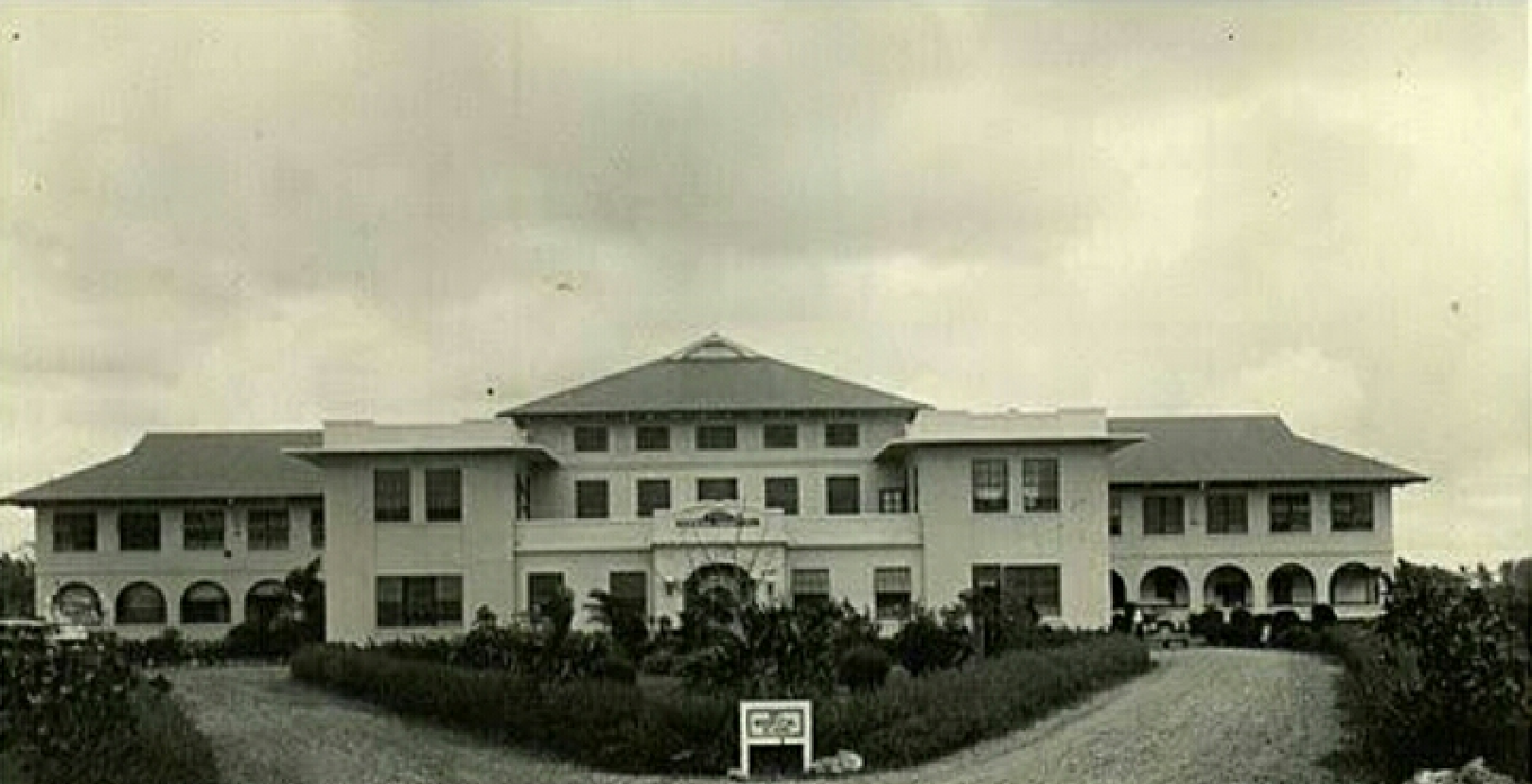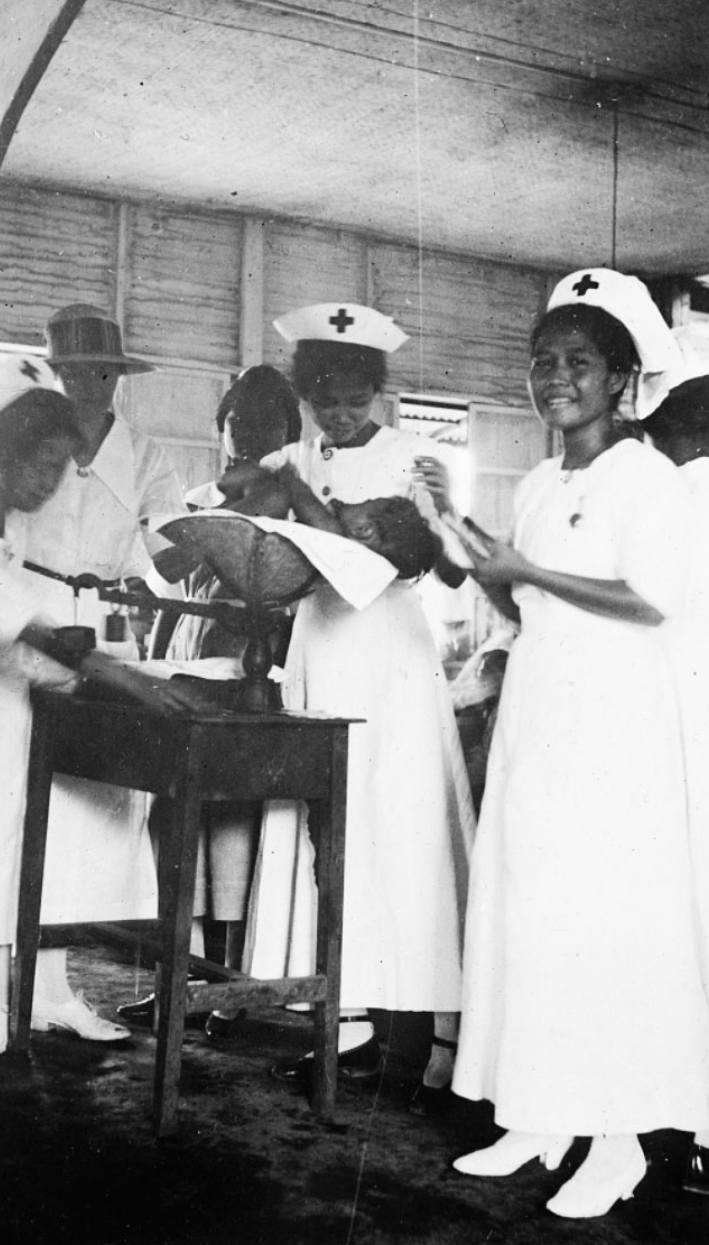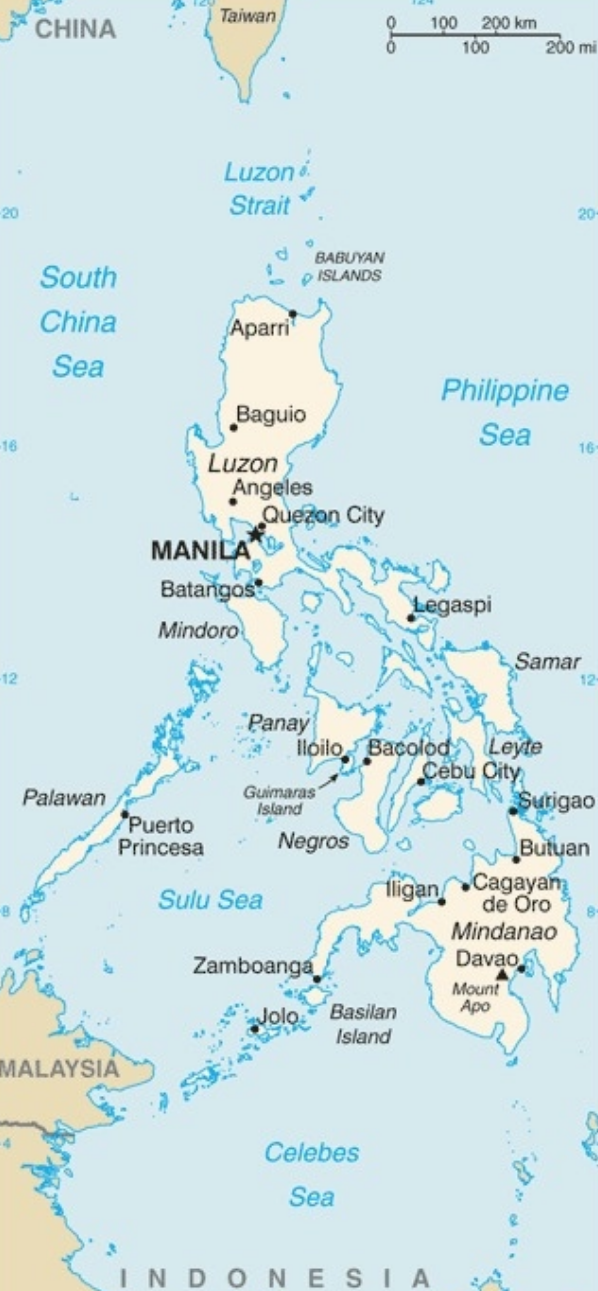Filipino nurses care for a baby in the Philippines. This photograph is from the American Red Cross.
Credit: “Baby show arranged by Red Cross nurse, Phillipines [sic] Chapter, P.I.” No known restrictions on publication.
Grade: 3-5Subject:
U.S. History, Social Studies, English Language Arts
Number of Lessons/Activities: 5
In this lesson, students will learn about the history of Filipino American nurses. Students will analyze the impact of historical events on the individual and collective experiences of Filipino American nurses. Students will examine how Filipino American nurses fought for their rights as well as for the rights of all healthcare workers in the country.
Students will:
- Describe how Filipino nurses came to the United States.
- Examine the experiences of Filipino American nurses.
- Identify challenges faced by Filipino American nurses and their advocacy efforts.
Filipino American Nurses (Elementary) Essay:
The Philippines is an
archipelago. This means it is a country that is made up of a group of islands. Before Europeans came, the Philippines had a
thriving society. They used ships and boats to explore the sea and to trade with others. They had their own religion that respected nature and spirits. They had writing, art, and education.
In 1565, Spain claimed the Philippines. Spanish
colonization lasted 333 years. The Spanish took control of the islands. They forced people to change their languages, religion, clothes, and more.
In 1898, Spain and the United States fought in the Spanish-American War. Spain lost and gave the Philippines to the United States. U.S. colonization lasted from 1898 to 1946.
During World War I (1914-1918) and World War II (1939-1945), there were many injured soldiers. Nurses were needed to help these soldiers. Many left their homes and joined the war effort. But, this meant there weren’t enough nurses to care for everyone at home. This problem continued even after the wars ended.
The United States came up with a solution for their nurse
shortage. They invited Filipinos to come and work in American hospitals. Some people think this was a way for the United States to control the Philippines. Some think the United States was exploiting Filipino labor. Others saw this as an opportunity. It opened job markets for Filipinos. It provided training. It increased skills. For some Filipinos, it even provided access to citizenship.
The United States opened
nursing schools in the Philippines. These schools followed American ways of teaching. For example, the Union Mission Hospital Training School for Nurses opened in 1906. It was the first nursing school in the Philippines. It's now called the Central Philippine University College of Nursing.
In 1903, the U.S. Congress passed a law called the
Pensionado Act. This Act gave
scholarships to Filipinos to study in the United States. Some of the first Filipino nursing students came to cities like San Diego, San Francisco, and New York City. This experience was very lonely for the Filipino nurses. They had no family. They did not know anyone. Some struggled with English. Others faced discrimination. They had to create communities. They found other Filipino nurses. They supported one another.
In 1965, the United States passed a new law. It was called the 1965 Immigration and Nationality Act. This changed immigration policies. It let in more skilled workers and reunited family members. Many nurses came from Asia at this time. Most were from the Philippines. About 25,000 Filipino nurses came.
Today, many nurses in the United States are from the Philippines or have Filipino
ancestry. They are a big part of the nursing field. But they face several challenges. They work long hours. They have tough working conditions. Some have limited English skills. They work with really sick people. This puts them at a higher risk for illness.
To support nurses and protect their rights, many Filipino nurses join labor
unions. They work together to fight for their rights. The Philippine Nurses Association was started in New York in 1928. It used to be called the Filipino Nurses Association. One thing that this organization did to help nurses was to create better rules for hiring nurses from other countries. They also started
mentorship programs so that nurses could guide and help each other.
Other groups also help Filipino American nurses. These groups include the National Alliance for Fair Licensure of Foreign Nurse Graduates, and the Foreign Nurse Defense Fund.
Bibliography:
Ceniza Choy, Catherine. (2003). Empire of Care: Nursing and Migration in Filipino American History. Duke University Press Books.
Garbes, A. (2022). Essential Labor: Mothering as Social Change. Harper.
Nazareno, Jennifer, Emily Yoshioka, Alexander C. Adia, Arjee Restar, Don Operario, & Catherine Ceniza Choy. From imperialism to inpatient care: Work differences of Filipino and White registered nurses in the United States and implications for COVID‐19 through an intersectional lens.
Gender, Work & Organization. 2021 Jul;28(4):1426-1446.
https://www.ncbi.nlm.nih.gov/pmc/articles/PMC8251240/
- Archipelago: a group of islands that are scattered or are in a body of water
- Ancestral: of, relating to, or inherited from an ancestor, one from whom a person is descended
- Colonization: taking complete control over another area or country and having power over the native people, land, politics, and more
- Exploit: to take advantage of someone or something
- Mentorship: a relationship where a more experienced person teaches a less experienced person and helps them to grow
- Nursing School: a school that trains people to become nurses
- Pensionado: a student from the Philippines who came to the United States for their education under the Pensionado Act
- Scholarships: a payment given to a student to help them with their education
- Shortage: a lack of something
- Thriving: to be successful, healthy, and growing
- (Labor) Union: a group of employees who come together to improve their working conditions
- Why did Filipino nurses come and work in American hospitals?
- What was the Pensionado Act of 1903? How did it affect Filipinos?
- What challenges did Filipino nurses face when they came to work in the United States?
- How did Filipino nurses come together to make their jobs better?
The Philippines is an archipelago, which is a group of islands. In the Philippines, there are over 7,000 islands.
Credit: CIA The World Factbook (Public Domain)
Activity 1: Locating The Philippines on a Map
- Ask the following question: “What do you know about the Philippines?”
- Show students a map or globe of the world. Point out Asia. Point out Southeast Asia. Point out the Philippines.
- Show students a map of the Philippines. Tell students the following: “The Philippines is an archipelago, which is a group of islands. In the Philippines, there are over 7,000 islands. The country is split up into three main islands: Luzon, Visayas, and Mindanao.”
- Facilitate a discussion by asking students the following questions:
- How is this similar to the United States?
- If someone is from New York, is that the same as being from California? Why or why not?
- Explain that Filipinos identify themselves by their home region and that these regions could have different ways of talking, traditions, etc.
Activity 2: Analyzing an Image
- Show students the photo entitled, “Baby show arranged by Red Cross nurse, Philippines (Library of Congress).
- Facilitate a class discussion by asking the following questions:
- What are some things you see in this photo?
- What do you notice about the people in the photo?
- What do you think is going on?
- What questions do you have after looking at this photo?
- Tell students, “This is a photo from an organization called the American Red Cross. It is a photo of Filipino nurses. In this lesson, we will learn about Filipino American nurses. They have a rich history in the United States and have made many contributions. We are going to study their experiences, struggles, and successes.”
- Play the following video trailer for the documentary “Nurse Unseen.”
- Facilitate a discussion by asking the following questions:
- Why was the United States appealing to the Filipino nurses?
- Why did they come?
- What obstacles did they face once they came to the United States?
Activity 3: Describing the Experiences of Filipino American Nurses
- Have students read the essay. Consider the following options:
- OPTION 1: Have students read the essay independently either for homework or during class time.
- OPTION 2: Read aloud the essay and model annotating.
- OPTION 3: Have students read aloud in pairs or small groups.
- Facilitate a class discussion by asking the Discussion Questions.
- Show students the video entitled, “Filipino nurses in America: The history vs. the stereotype.”
- Pause to define vocabulary words such as “stereotype” and to recap/summarize sections of the video.
- Facilitate a class discussion by asking the following question: What more did you learn about the experiences of Filipino American nurses in the United States?
Activity 4: Defining Bayanihan
- Show students the video entitled, “COVID-19 has taken a dramatic toll on Filipino nurses.”
- Facilitate a class discussion by asking the following questions:
- What happened to Filipino nurses during the COVID-19 pandemic?
- Who is Gloria Lamela Beriones? What is her story?
- What is bayanihan culture? In what ways do Filipino nurses show “bayanihan” or help each other as a community?” (Bayanihan refers to a spirit of community.)
- Why might bayanihan influence Filipino people’s decision to become a nurse? How does nursing as a profession demonstrate bayanihan?
- Have students create a poster that illustrates what bayanihan culture means to them. Have them articulate how they help others and how they want others to help them.

Iloilo Mission Hospital is a teaching hospital in Jaro, Iloilo City, Philippines. It was originally founded as an American hospital in the Philippines that provided nursing education and established the Union Mission Hospital Training School for Nurses in 1906 and is now known as the Central Philippine University College of Nursing.
Credit: Americana22ount, Public domain, via Wikimedia Commons
Activity 5: Creating a Timeline
- Tell students that timelines are a chronological arrangement of events. Show examples, if needed.
- Tell students they will be creating a historical timeline analyzing the events included in the essay and their impacts on Filipino American nurses.
- Assign small groups to research the following events/topics:
- Group 1: Pre-Colonial Philippines
- Group 2: Spanish Colonization
- Group 3: Philippine Independence
- Group 4: World War I and World War II
- Group 5: Pensionado Act
- Group 6: 1965 Immigration and Nationality Act
- Group 7: Filipino Nurses and Unions
- Have each group research the following:
- What are the dates of the event?
- What is the event? What happened?
- What caused the event?
- How did the event impact Filipino American nurses?
- Have each group create a poster of their event:
- Have students include content from their research (i.e., dates, description, causes, effects).
- Have students research and select an image that best represents their topic. Have them include the image on their posters along with source and caption.
- Have students arrange the posters in chronological order around the classroom.
- Have students walk to each poster and read the content.
- Facilitate a discussion by asking the following questions:
- How are all the events connected?
- How do laws and policies impact people’s lives?
- What contexts led to the growth and development of Filipino American nurses?
- Have students write thank you letters to healthcare workers at a local hospital or healthcare center. Have students share what they have been learning in class and express gratitude to the healthcare workers.
- Invite a Filipino nurse or healthcare worker to talk to the class (in person or online). Prepare students to ask the speaker questions about their career, cultural background, and experiences in the healthcare field.
- Have students write short biographies about notable Filipino American nurses such as:
- Anastacia Giron-Tupas (1890-1972)
- Ines Cayaban (1904-1997)
- Esther Hipol Simpson (1945-2018)
D2.Geo.2.3-5.
Use maps, satellite images, photographs, and other representations to explain relationships between the locations of places and regions and their environmental characteristics.
D2.His.1.3-5.
Create and use a chronological sequence of related events to compare developments that happened at the same time.
D2.His.14.3-5.
Explain probable causes and effects of events and developments.
CCSS.ELA-Literacy.RI.5.7
Draw on information from multiple print or digital sources, demonstrating the ability to locate an answer to a question quickly or to solve a problem efficiently.
CCSS.ELA-Literacy.RI.5.9
Integrate information from several texts on the same topic in order to write or speak about the subject knowledgeably.




